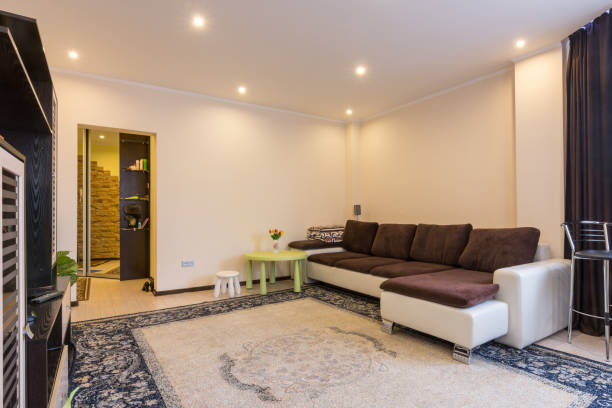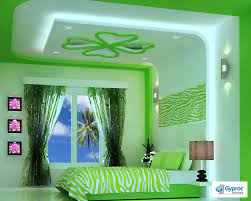The new year brings home renovations. Renovating your home could be the perfect way to start the new year. It is often overlooked that the fifth wall of a room is the ceiling. It is important to pay attention to the ceiling when designing a room. This can make the space stand out and give it a unique style. False ceilings are a great way to bring beauty to a room. False ceilings are fitted ceilings that are suspended below the ceiling. The false ceiling can often be seen through the original ceiling. There are many design options available. You can make it vintage or modern. It can be used as a background for decorative lighting fixtures and hide unsightly ac outlets. A false ceiling can give a room a more sophisticated and polished look than a plain ceiling. A false ceiling can be added to any room. It can be used to add an elegant lattice design to the living room or a fun detail to the children’s bedroom. False ceilings can also be used in offices to hide wires or pipes. False ceilings used to be made of cardboard or cork. They were not very durable. There are better options now. Gypsum is one such material.
About Gypsum
Gypsum, a white powdery mineral similar to chalk, is also known as chalk. It is extracted from sedimentary rock deposits. It is chemically Calcium sulphate-dihydrate (CaSO4H2O). It has been extensively used in plastering walls and sculptures for many centuries. It is comparable in compressive strength to cement but has the advantage of being lighter. It is an old mineral used in ancient sculptures but is not well-used as a building material. It is being used again as a material in drywalls and false ceilings. High-quality building materials made from Gypsum have been created using advanced techniques.
Why is Gypsum #1 for false ceilings?
Resist the temptation to crack
Cement is susceptible to shrinkage and cracking. To avoid cracks, cement must be cured. Gypsum does not require curing. Cement plaster can crack even after curing. Gypsum has a compressive force of 5-7 MPa, similar to cement plaster’s compressive strength at 3.5-7.5MPa. Gypsum has a similar compressive strength to cement plaster, which is 3.5-7.5 MPa. It also has tensile strength and can withstand compression and pulling forces. Gypsum boards are not hard and brittle and will not crack. Because Gypsum is not susceptible to warping in wet conditions like wood, it can also resist seepage damage.
Superior thermal insulation
Gypsum can be used to insulate the room and save energy. This will keep your rooms cool and make air conditioning more efficient. It will also trap heat, which can lead to energy savings. A false ceiling traps air between the ceiling and the true ceiling. This extra layer will provide insulation. Air is a great insulator. Therefore, less heating and cooling are required. This can result in significant energy savings, especially for areas with extreme temperatures.
Fire Resistance
Cork and wood have been used traditionally for false ceilings. However, they are not fireproof. Gypsum contains water in its crystal structure, which will act as a barrier and inhibit fire. Gypsum will remove any water from the crystals if it comes into contact with flames. This will release steam. Gyproc FRMR boards which are both fire- and moisture-proof, are another option.
Rust inhibitor
The life expectancy of steel supports that are embedded in Gypsum plaster is extended by the fact that it prevents rusting. All electrical fittings and pipes made of gypsum plaster won’t corrode. It can be used with all types of metal supports. Gypsum boards absorb only 5% of moisture. This low water content will prevent the metal from rusting.
Lightweight, strong, and flexible
Gypsum is lighter than POP and cement plaster. A thin layer of gypsum plaster (6mm) is needed, whereas a thicker layer (>10mm) of cement would be required. It is stronger than cement and requires less maintenance. Gypsum boards can easily be moulded to any design you choose because they are flexible. Although it is similar to plastic in its moldability and eco-friendly, Gypsum boards are almost identical to plastic. The false ceiling also has a uniform light reflector, giving it a well-lit façade. It is easy to maintain and requires no additional polish. False ceilings made of Gypsum can last for up to 20 years if they are well-constructed.
Better for the environment
Gypsum boards are more energy-efficient than cement plaster. Also, the manufacturing process emits less carbon dioxide than a similar weight of cement. Gypsum boards can be fully recycled, while POP cannot. Because it is abundant, mining it from the earth isn’t as destructive as other similar minerals. Gypsum has a lower ecological impact than other minerals.
It is versatile and available in many designs.
False ceilings made of Gypsum are now available in many styles. You can find customizable options to suit your home and personal tastes. They are inexpensive and simple to install. They are unlikely to be repaired and can be easily repaired in an emergency. You can use it with any paint on your ceiling since gypsum boards come in many colours. They can conceal unsightly wires and can hold recessed light fixtures.
Gypsum plaster and gypsum boards are still available as construction options. False ceilings will also be around as a design option. False ceilings not only look great, but they also offer thermal and acoustic insulation. A custom-designed gypsum roof can make your space stand out while saving you money on heating or cooling the room. This will give your room that extra flair you are looking for. This can make a huge difference in high-walled rooms that could benefit from an additional light source. A false ceiling can also reduce echoing, which can sometimes be an issue in high-walled rooms. Because it is both waterproof and insulating, it solves many problems. Gyproc can help you bring your ideas to life!



